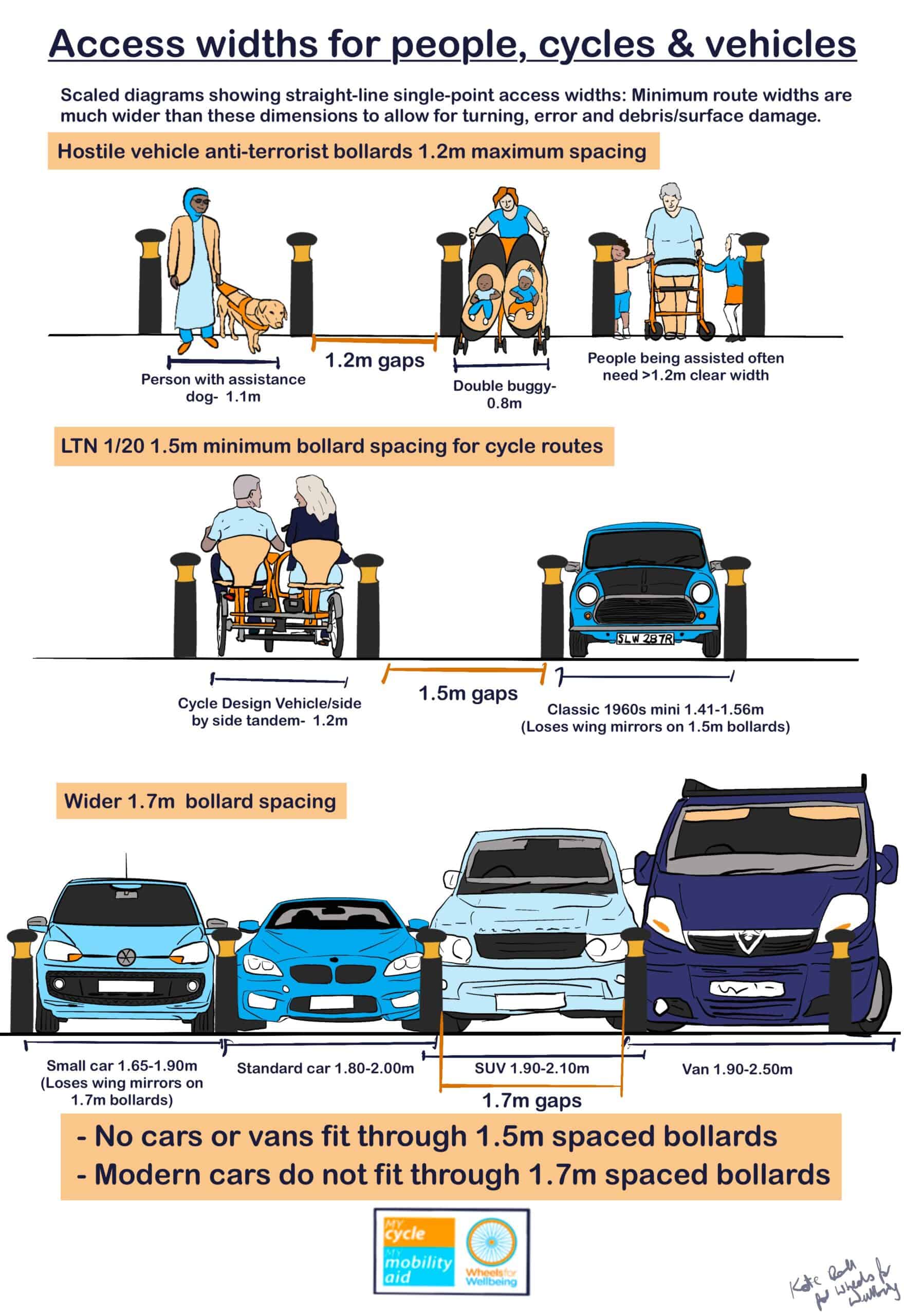What is the maximum gap between bollards that will keep car and van drivers off a walking/wheeling and cycling route?
What is the minimum gap between access point bollards that will enable Disabled people and others using larger cycle types to use a cycle routes?
What bollard spacing is used to prevent people using vehicles as weapons to attack buildings and busy public spaces?
It’s not surprising that sometimes people are confused about how bollards should be installed in different situations!
We’ve put this graphic together to show that bollards spaced with gaps of 1.5m to 1.7m will prevent any modern cars from getting onto a cycle route, while providing access to Disabled people using larger cycle types.
The barriers used to prevent casual driving onto walking/wheeling and cycling routes are different from the hostile vehicle security barriers that are installed near some buildings and to protect busy pedestrian spaces. Vehicle security barriers are installed with 1.2m maximum spacing. Accessible cycle routes cannot pass through these barriers.

References for dimensions used in this graphic are here.
